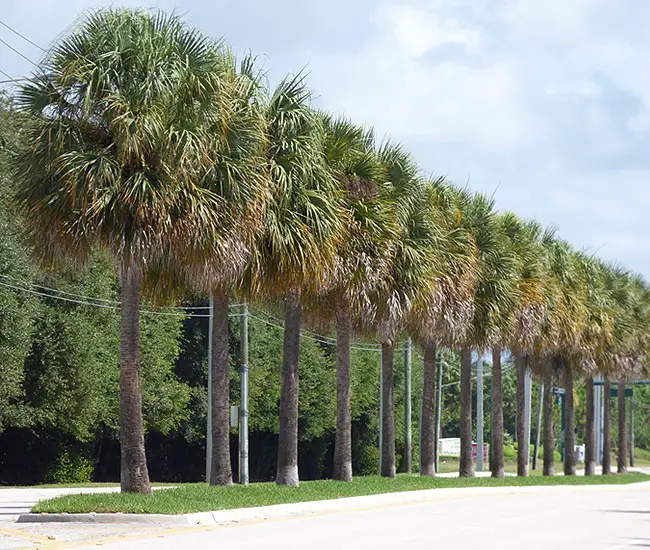
While there are over 2,500 different palm species in the world, only 14 palm species, belonging to 9 genera, are truly native to the United States. With thousands of palm trees growing all over the United States, it’s hard to believe that most of them have been imported.
Most palms can be found growing in the southeastern and southern States, extending from North Carolina through Florida and the Gulf Coast into Texas and as far inland as Arkansas and southeastern Oklahoma. But, the greatest number of palms grow in Florida.
While most palms prefer low-lying areas, some like the mountains. Keep in mind, that most palms can be grown way beyond their natural distribution. Under the right conditions, palms can be successfully cultivated in areas far from their place of origin.
14 Palm Trees That Are Native to the United States
In addition to 14 types of palms, there are 2 palm species, the coconut, and date, that became naturalized a long time ago. The naturalization process happens when the palms escape from cultivation and start to propagate on their own. Of course, the soil and the climate have to be sufficient enough.
Out of 14 palm species, only nine are full-sized trees, two species are shrubs that don’t look like trees at all, and the other three can look like trees under certain conditions.
The most popular of our native palms are probably Cabbage Palmetto, Royal Palm, Texas Palmetto, California Fan Palm, Dwarf Palmetto, and Needle Palm. Let’s look at each palm tree type a little bit closer.
1. Buccaneer Palm Tree (Pseudophoenix sargentii)
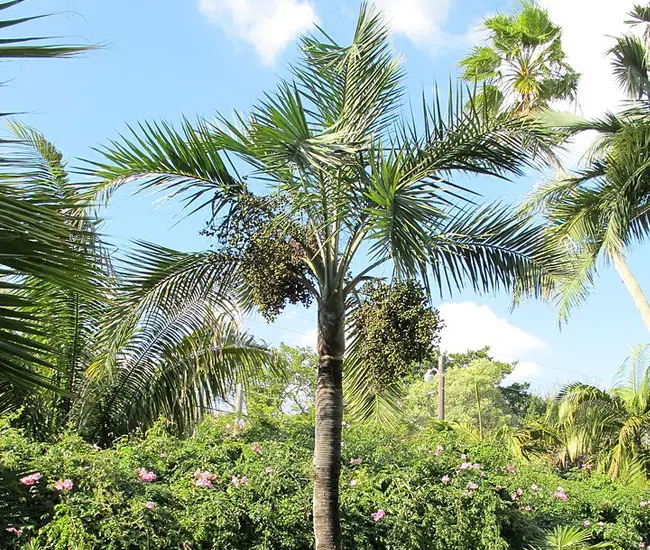
Better known in cultivation than in the wild, the Buccaneer Palm is another warmth-loving palm that is native to southern Florida, the Keys, and various islands of the Caribbean.
It has a self-cleaning ringed trunk that is topped with dark green feathery-shaped leaves that are about 7 feet long. This is a medium size palm that can grow up to 35 feet tall in the wild but usually doesn’t get taller than 10 feet.
Buccaneer Palm, scientific name Pseudophoenix sargentii, is also known as Cherry Palm, Sargent’s Cherry Palm, and Palma de Guinea.
2. California Fan Palm (Washingtonia filifera)
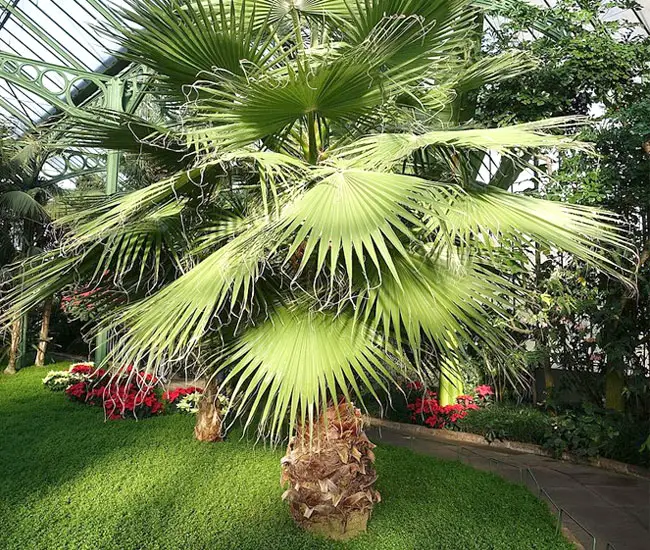
Also known as Desert Fan Palm, Washingtonia filifera is the only palm native to the western United States. It’s a study palm with a massive brown-gray trunk about 3 feet wide and a large open crown of fan-shaped leaves. This palm can get up to 60 or 75 feet tall.
Washingtonia filifera can be found growing in the rocky areas bordering the Colorado Desert of southeastern California and in Yuma County of Arizona, as well as northern California.
The most famous and frequently visited group of California fan palms is located in Palm Canyon near the base of the San Jacinto Mountains. Arizona has about a hundred palms hidden away in a deep canyon of the Kofu Mountains.
3. Cabbage Palm Tree (Sabal palmetto)
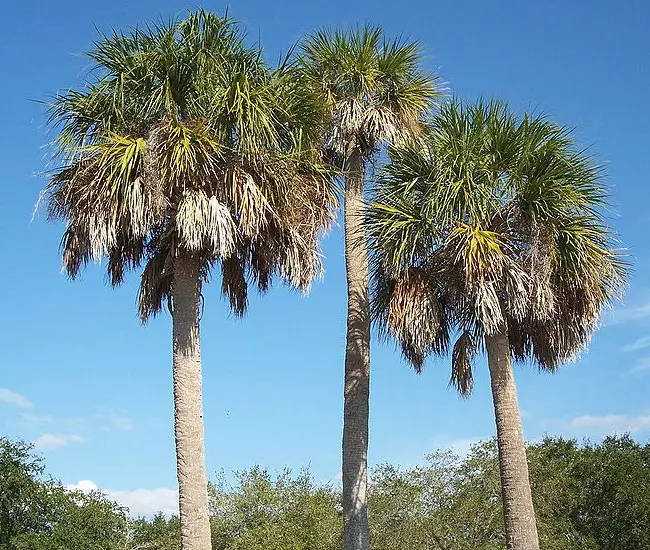
Cabbage palm, also known as Cabbage Palmetto, is a durable palm that got its name because of the edible bud or “cabbage”. This adaptable palm can grow up to 80 feet tall but usually doesn’t get higher than 50 feet.
It has a grayish-brown trunk covered with old leaf bases also known as boots that is about 1 to 2 feet in diameter. The rounded dense and heavy crown consists of large fan-shaped fronds that are about 5 to 8 feet long.
Sabal palmetto can grow in a wide range of conditions preferring low-lying wet places but also thriving in dry, rocky, or sandy areas. The largest native grove of Cabbage palms, about 150,00 acres, can be found in Indian Prairie between the Peace River and
Lake Okeechobee of Florida.
This palm extends along the coast from North Carolina southward into Florida. They can grow in the West but are less popular.
4. Dwarf Palmetto Palm (Sabal minor)
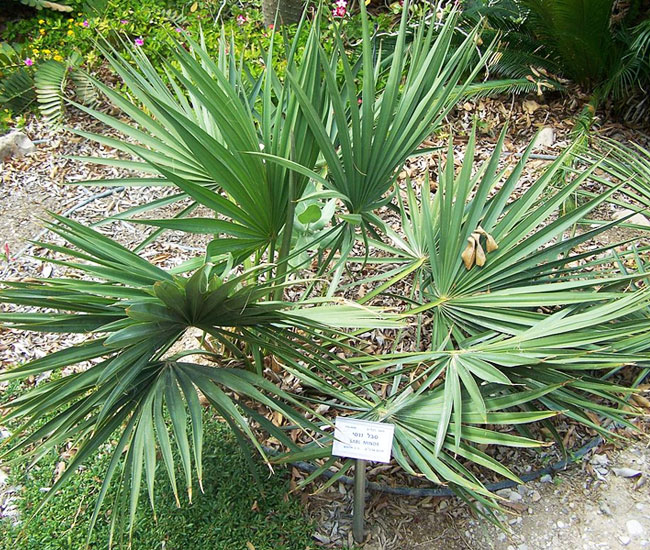
Dwarf Palmetto Palm, scientific name Sabal minor, has native distribution on the Atlantic Coast from central Florida north to Monkey Island, North Carolina.
On the Gulf Coast, it can be found expanding from central Florida to central Texas, Arkansas, north to southern Oklahoma, and northern Alabama, all the way south to Mexico.
This extremely cold hardy palm is naturally found in a diversity of habitats, including floodplains, forests, swamps, and sometimes in drier areas.
It has a short trunk hidden underground that can slowly grow up to 3 feet tall. It has fan-shaped leaves that are about 6 feet long with about 35 leaflets.
5. Florida silver palm (Coccothrinax argentata)
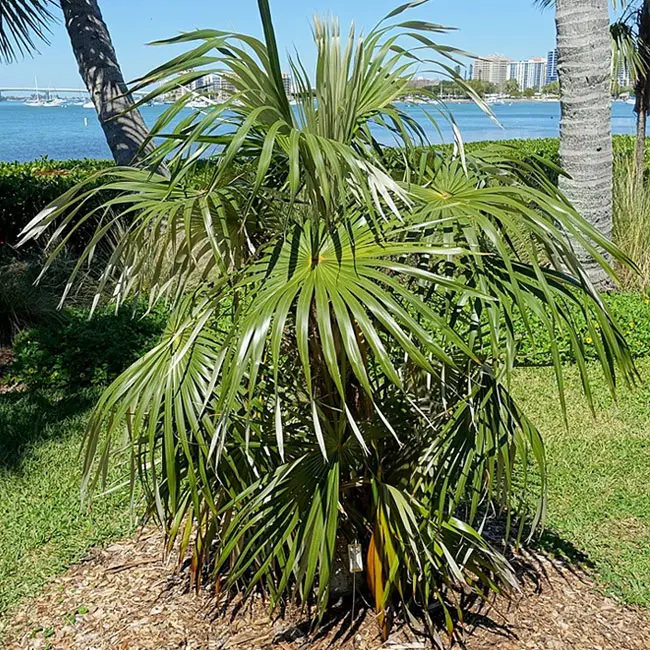
Another palm that grows in southern Florida along the eastern coast and in all the Keys is Florida Silver Palm, scientific name Coccothrinax argentata. This warmth-loving palm has a slender trunk about 6 inches in diameter and a crown of fan-shaped leaves that are about 2 feet wide.
It can get up to 25 feet tall but can also be shrubby. You can tell it apart from Thatch’s palms by the silvery lower surface of the leaves, hence its common name Florida Silver palm.
6. Jamaican Thatch Palm (Thrinax parviflora)
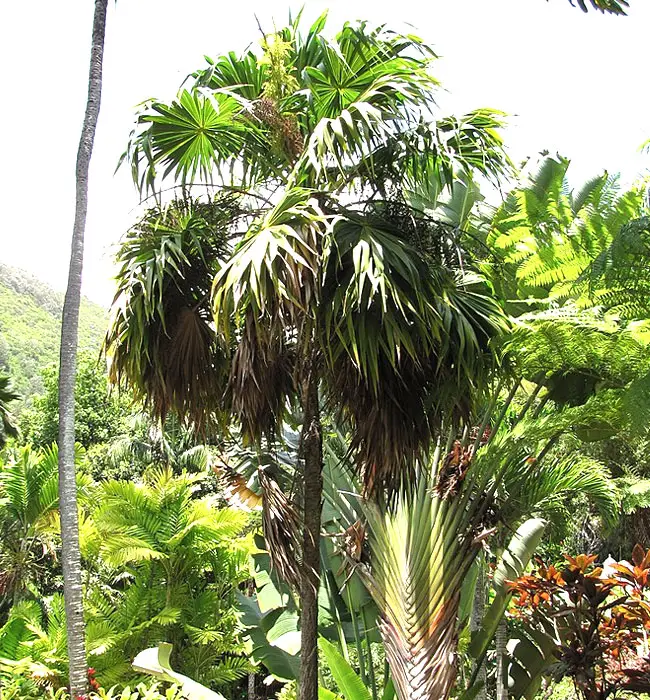
A very similar but less popular than Key Thatch, Jamaican Thatch palm, scientific name Thrinax parviflora, also grows in the southern portion of Florida and various islands of the West Indies.
It has a slightly more slender trunk that, is about 6 inches thick, than Key Thatch but very similar foliage which consists of fan-shaped leaves that are 2 to 3 feet wide with lighter-colored under surface.
7. Key Thatch Palm (Leucothrinax morrisii)
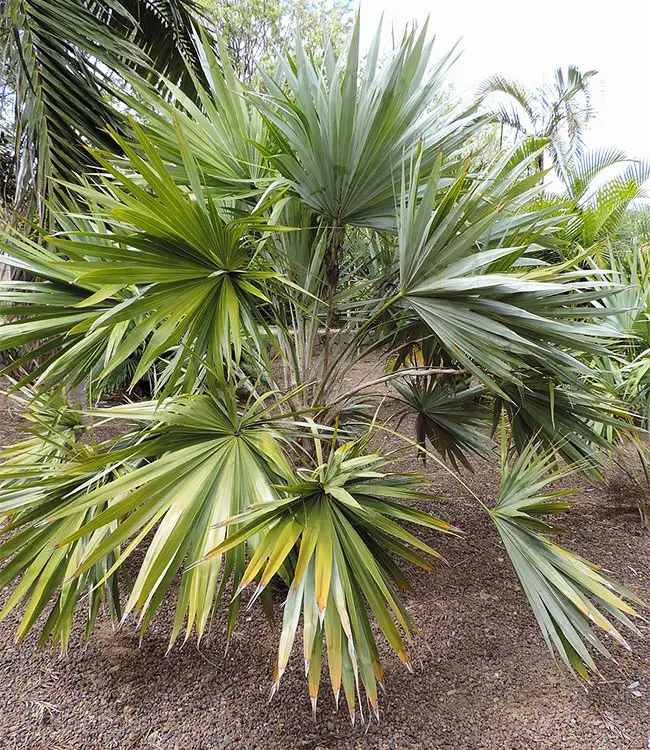
Key Thatch Palm, scientific name Leucothrinax morrisii or Thrinax morrisii, can be found growing in the southern portion of Florida, the Keys, and in various islands of the Caribbean. Some other common names are Brittle Thatch, Broom Palm, Peaberry Palm, Sea Thatch Palm, and Blue Thatch Palm.
This is a medium size palm with a slender grey trunk that is topped with blue-green or yellow-green fan-shaped fronds. It is often confused with Coccothrinax but can be easily distinguished by its split petiole bases, and white fruits.
8. Louisiana Palmetto Palm (Sabal louisiana)
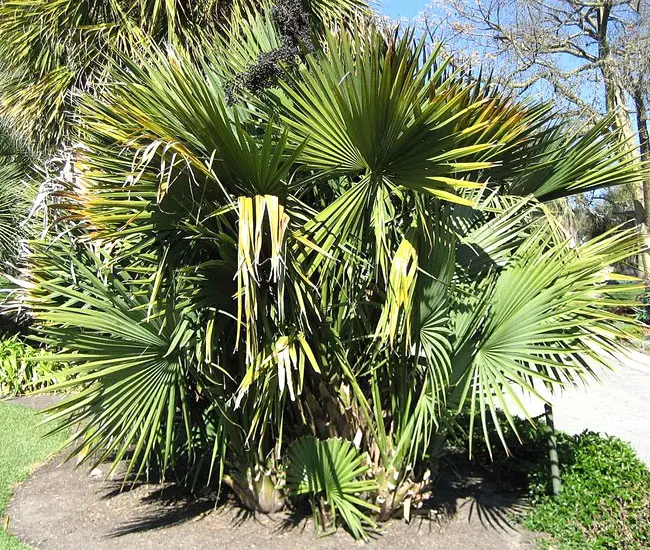
Louisiana Palmetto Palm, scientific name Sabal louisiana or Sabal minor var. louisiana, is very similar to Dwarf Palmetto, but very frequently forms a trunk above the ground that can be about 3 to 6 feet tall.
Because of the resemblance many dismiss Louisiana palmetto palm as a variant of Sabal minor but the formation of the trunk, which sometimes can reach 10 feet, leads to believe they are not the same.
It grows only in a few swampy areas of Louisiana and east Texas.
9. Needle Palm Tree (Rhapidophyllum hystrix)
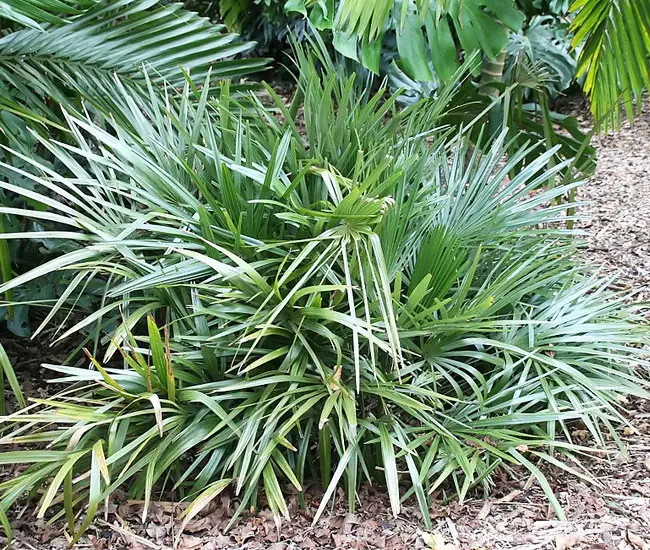
One of the most cold tolerant palms, Needle Palm, scientific name Rhapidophyllum hystrix, is native to coastal margins of the subtropical eastern Gulf and south Atlantic states of the United States.
It can be found growing from coastal southeast South Carolina, southward to Florida, and west across the coastal plain of Mississippi and southern Alabama.
It doesn’t form a trunk but instead has slender stems, about 6 feet long, growing very tightly together from a single base. This slow-growing plant eventually forms a dense base 3.5 feet tall with sharp needle-like spines between the fronds.
10. Paurotis Palm (Acoelorrhaphe wrightii)
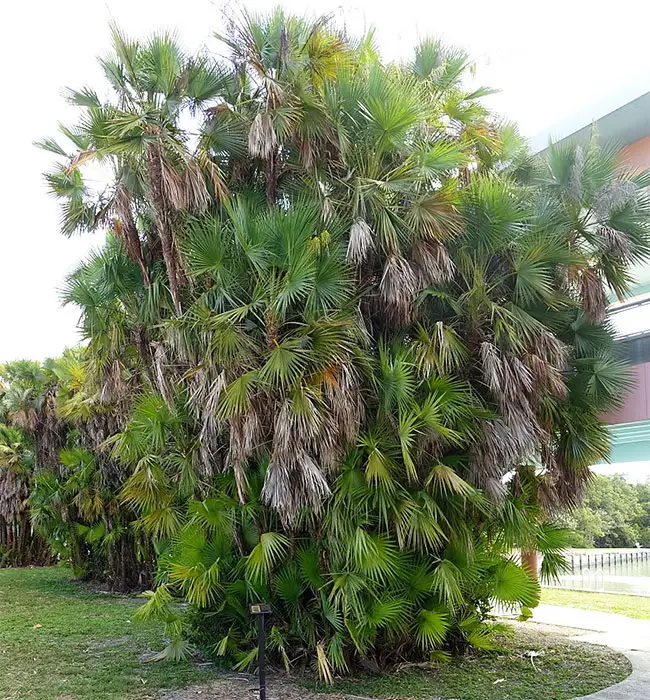
Paurotis Palm, scientific name Acoelorrhaphe wrightii or Paurotis wrightii, is a clustering palm that forms tight clumps of unique slender trunks. It grows in a colony from an underground main stem with multiple suckers clustered at the base.
About 20 fan-shaped fronds that are green above and silvery underneath are arranged into crowns that sit on orange-green, armed stems. Paurotis palm can grow up to 20 – 30 ft tall and 5 -10 ft wide.
This palm grows in the Everglades of Florida but not on the Keys. Some other common names for this palm are Everglades Palm and Silver Saw Palmetto Palm.
11. Royal Palm (Roystonea regia)
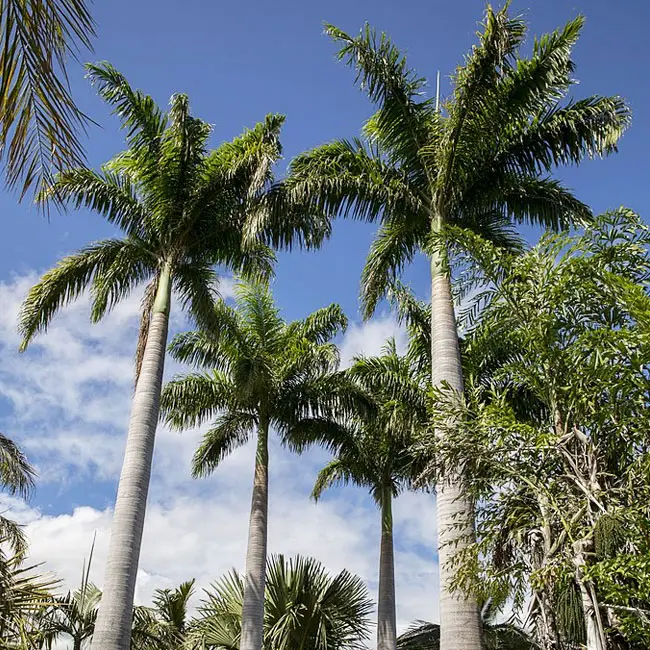
Royal Palm, scientific name Roystonea regia or Royastonea elata, is also known as Florida royal palm, or Cuban royal palm. It features a stone-grey faintly ringed trunk that is topped with a beautiful crown of dark feather-shaped leaves that curve over gracefully.
The trunk can get up to 2 feet thick at the base. Royal Palm can grow up to 90 or 100 feet tall but in cultivation usually doesn’t get higher than 50 feet.
It grows in three southernmost counties of Florida near tidal water and on low land. The most famous are those that grow in certain areas of the Everglades in Florida.
In recent years, so many Royal palms have been destroyed by fire and transplanted as ornamentals, that they were in danger of complete extinction.
12. Scrub palmetto (Sabal etonia)
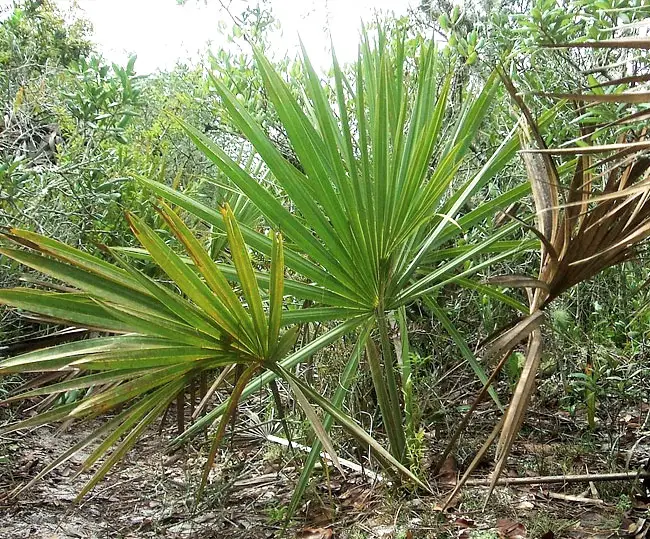
Scrub Palmetto palm, scientific name Sabal etonia, is only native to Florida where it grows mainly in the sandy areas of Florida’s lake region.
This bushy plant, also known as Entonia palmetto, has a single underground stem that sometimes can form into an above-ground trunk up to 6 feet tall.
Scrub Palmetto palm usually holds about four to seven fan-shaped fronds each with 30–50 leaflets. Due to its limited distribution, this palm is not as popular.
13. Saw Palmetto Palm (Serenoa repens)
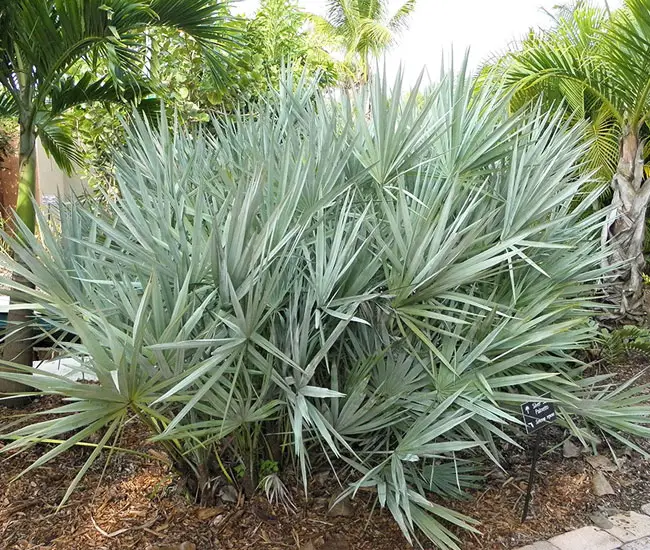
Saw Palmetto Palm, scientific name Serenoa repens, is the most widespread among our native palms. It can tolerate different types of soils and conditions, especially along sandy shores where few other plants thrive.
In the pinelands of Florida and neighboring States, it’s almost a weed. Growing in clumps it can reach maximum height around 7–10 feet. This palm is extremely slow-growing, and long-lived, with some palms being as old as 600–700 years.
It’s native to the subtropical Southeastern United States, spreading from South Carolina
to the Keys and along the Gulf Coast all the way to Louisiana. Serenoa repens is also known as Silver Saw Palmetto Palm and Scrub Palm.
14. Texas Palmetto Palm (Sabal mexicana)
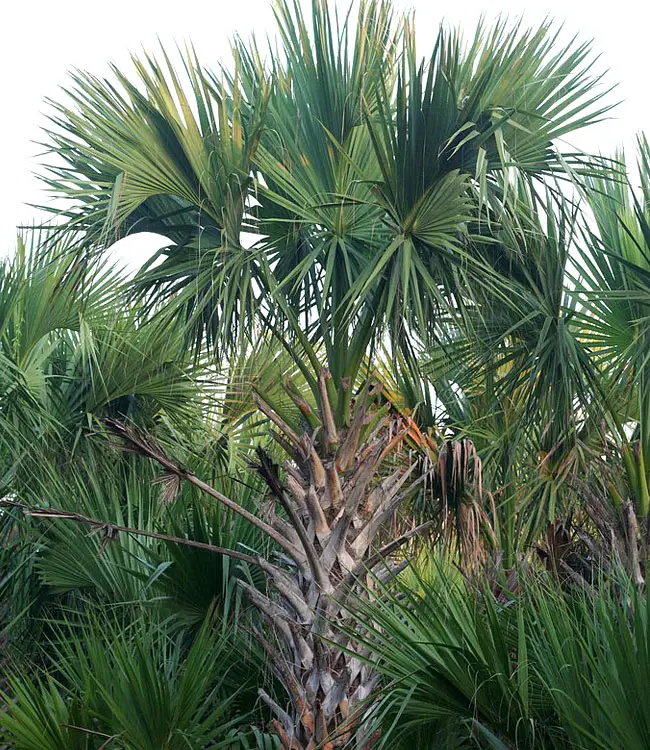
Texas palmetto palm, scientific name Sabal mexicana or Sabal texana, is closely related to Sabal palmetto but has a larger and heavier crown of fan-shaped leaves. It’s also shorter and stouter than the Cabbage Palmetto, growing up to 50 feet tall and measuring up to 3 feet in diameter.
It grows naturally in the Texas and Mexican sides of the Lower Rio Grande River. The most famous grove is located near Brownsville in Texas. Needless to say, the Texas palmetto is the most popular ornamental tree in Texas. It is also widely planted along the Gulf coast.
Palm Trees Naturalized In the United States
There are two palm trees, Coconut and Date, that were brought into the United States a long time ago by travelers. After a while, these palms have escaped the cultivation and began to reproduce on their own.
1. Coconut Palm (Cocos nucifera)
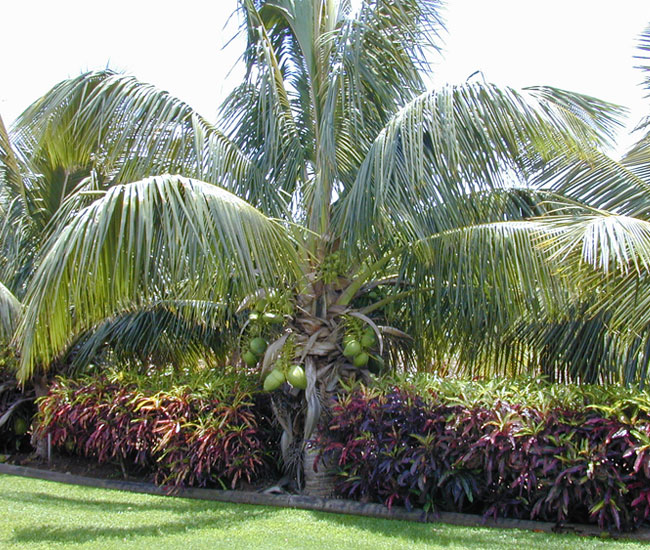
There is probably no other palm so well known and widely distributed as the Coconut Palm, scientific name Cocos nucifera.
It grows best in the low-lying areas near the coast with an annual rainfall of 50 inches or more and circulating groundwater. It can also successfully grow inland even in elevated places if the conditions are favorable.
This warmth-loving palm can be found growing in southern Florida from Palm Beach southward. While some of them appear to be native, they have been imported into the area a long time ago.
2. True Date Palm Tree (Phoenix dactylifera)
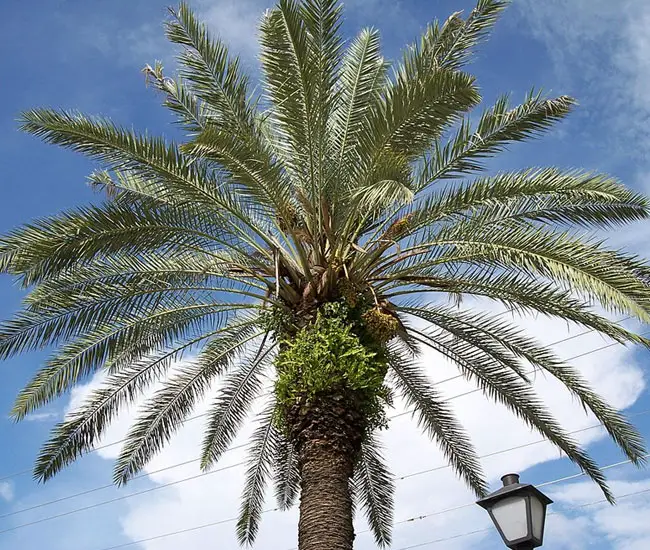
True Date Palm, scientific name Phoenix dactylifera, is one of the oldest cultivated plants. It was brought to the United States by Spanish missionaries a long time ago. Date trees can live for a long time reaching an age of 100 to 200 years.
The date palm has a gray trunk covered with an ornamental diamond-shaped pattern of leaf scars that is about 16 inches in diameter and stiff grayish-green featherlike leaves that are about 10-20 feet long.
You can find Date palms growing along the Gulf Coast, in Florida, in southern California, southern Texas, and Arizona.
Map Of Places With Palm Trees In The United States
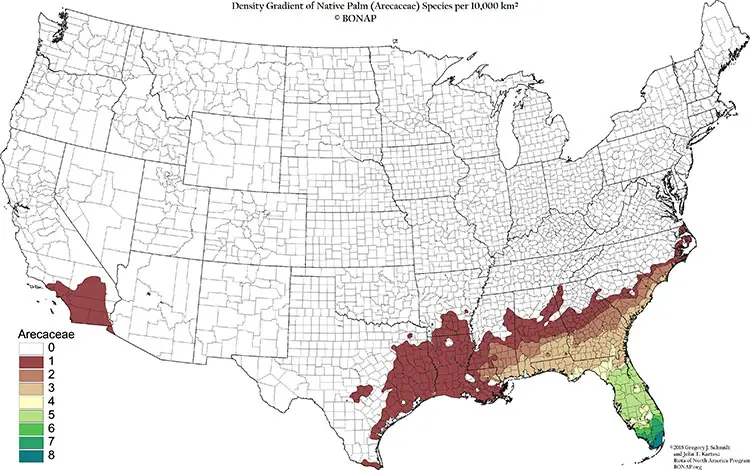
What Palm Trees Are Native to California
While there are many types of palm trees that can grow in California, the only truly native palm is the California Fan Palm (Washingtonia filifera) also known as Washington palm.
In the wild, it can be found growing in the rocky areas bordering the Colorado Desert of southeastern California and in Yuma County of Arizona, as well as northern California. All other palm varieties have been originally imported. Here is more info on palm trees in Southern California.
What Palm Trees Are Native to Hawaii
Despite the favorable climate, Loulu palms, scientific name Pritchardia, are the only palm species native to Hawaii. The genus Pritchardia consists of 25 species of palms native to the tropical Pacific Islands. 19 of them are native to Hawaiian islands.
The date palms, traveler’s palms, coconut palms, and bottle palms found on the island have been imported over the years.
Loulu palms have a single trunk and fan-shaped leaves. They usually are medium to large sized palms reaching only 25 to 60 feet in height. The color of the leaves and fruit features vary depending on the species.
Related articles:
–Top 10 Most Popular Florida Palm Trees (with Pictures)
–Top 35 Types of Palm Trees (with Pictures)
–Palm Tree Care 101: Ultimate Guide to Health & Happy Palms
